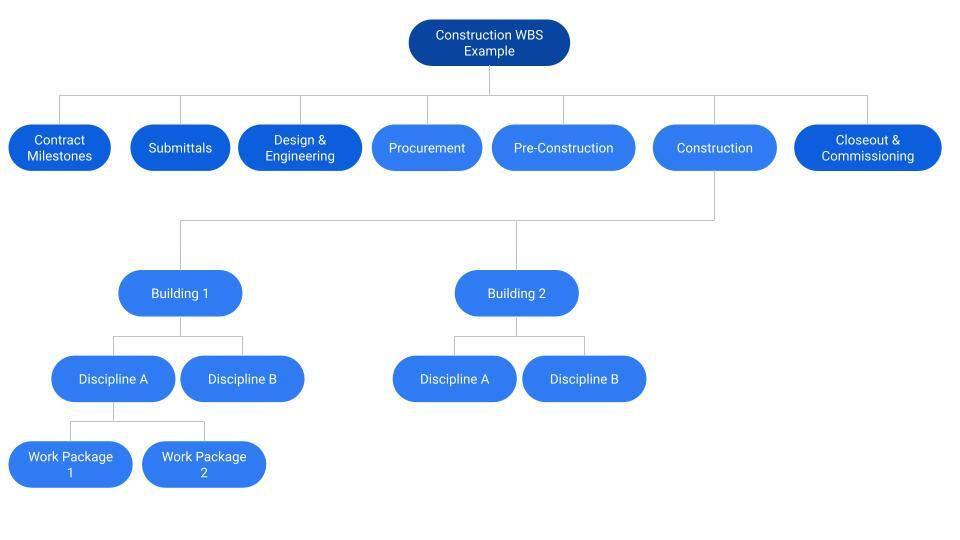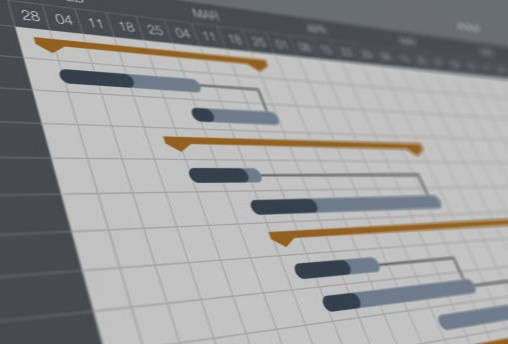In my career as a project manager in the construction industry, I’ve had the opportunity to not only learn from my peers, but also from my own research. Unfortunately, not every organization actually takes the time to train the following techniques to their PM’s, and much of it is often left to them to figure out on their own. The following list isn’t all-encompassing by any means, but it definitely is something I would consider a minimum requirement in order to effectively manage a project in construction.
For more details on any of the techniques listed below, simply do a quick google search and you’ll find there are quite a few free templates out there for you to utilize.
The 5 Key Project Management Techniques
1. Utilize Tech Wherever Possible (UTWP)

Okay I’ll be honest, I made UTWP up... but it’s at the top of my list for a reason! Utilizing technology to improve existing processes and workflows has been a staple of mine my whole career. I’ve been in the position where I, like many other PM’s out there, have waaaay too much on my plate. I’ve constantly explored ways of automating workflows, such as creating email templates, macros in excel, and other spreadsheet-related hacks. Once I discovered modern construction software, I realized the potential it offered and how it could make my life so much easier.
In my opinion, there is no better software to assist a PM on their projects than Construction Workflow Automation (CWA). It puts PMs in the driver seat and lets them tell the software exactly what they need it to do, not the other way around.
2. Work Breakdown Structure (WBS)

This one is real, I promise! A work breakdown structure is used by most PMs before they start building out the project schedule. It lays a solid foundation for your construction project and allows your team to easily see the different aspects of the job, without being overwhelmed at first glance.
Why should you use it though? A well planned WBS breaks down the work into smaller, more manageable chunks. It allows you to divide and conquer by easily assigning tasks to your team members and illustrate any hierarchy or dependencies between them. You can think of it as a map which illustrates the flow of each of the tasks on the project.
A WBS is usually created by the entire leadership team on a project, including PM’s, Supervisors, Designers, and PCs. The first WBS is usually very high level, and can be broken down further into smaller sub-deliverables as more and more eyes view it. More detailed WBSs can be made from the first one, until the team reaches a point where each task can be assigned to a specific person to accomplish.
3. The Kanban Methodology - for task management and greater efficiency

Kanban can be used to help monitor and manage projects by emphasizing continuous delivery and providing everyone with a clear view and understanding of the progress and flow of each task within the project. This can not only help you manage your projects and teams, but can also really help organize your day-to-day personal tasks as well!

It’s really been a lifesaver for me in my career, and fortunately now we are in an era of innovation where automations can be built on top of methodologies such as Kanban. These solutions already exist today and can be seen in bunches in the CRM space.
4. Gantt Charts - for project scheduling and planning

These are another visual aid for PMs and project team members. In fact, Gantt charts are so useful that most construction companies have been using Gantt charts for decades to help plot out their project schedules, especially since the introduction of Microsoft Project.
There is so much you can do with a Gannt chart, from simply scheduling tasks for one or more projects, planning in sprints, plotting milestones, and comparing scheduled vs. actual timelines for projects.
5. The Pomodoro Technique - to organize your daily tasks and keep you focused
Despite having the above methods in place, and even organizing your personal tasks in a Kanban board, there is always a time where it is not clear or easy to see which tasks are a priority, and which ones you should work on during the day.
This is where the Pomodoro technique comes into play. This technique prompts you to first plan out the 5 most important tasks for the day that you must accomplish. This can be done either in the evening, or the morning before you start your work day. The way you organize the priority of these tasks is by numbering them from 1 to 5. You must complete the tasks in the order in which you wrote them down, and each task is assigned a time estimate in the form of 25 minute blocks. Each of these blocks is separated by a 5 minute break, which allows you to take a rest and regroup for another 25 minute focused session.
Closing Remarks
As I mentioned above, there are a variety of other PM techniques out there that may also apply to construction. The main point here is that it is essential to keep honing your skills and constantly look to technology to help increase your productivity.
If you’re lucky enough to be part of an organization that offers you the tools and education you need, then this advice still applies to you! It’s always good to be proactive and find any edge you can.
So get ahead of the construction industry and learn to make evaluating your current techniques a constant habit in order to increase the rate of your own productivity.
If you enjoyed this article, join our mailing list now to receive all the latest articles and stay up-to-date on what Ontraccr is developing to bring automation to the construction industry!






